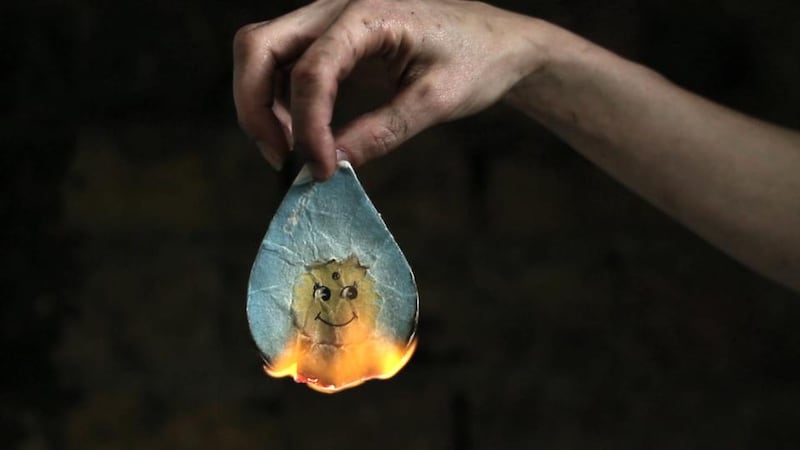One of the problems with feminism is that there’s a temptation to think the battles have all been won. Another is that some see the goal of feminism as being a world in which no differences between men and women are acknowledged. Neither of these things is true, but you’re not always allowed to say that, particularly in the art world.
The first statement is easier to take on: the figures speak for themselves. Artprice. com's list of the top-priced 300 works selling at auction, between 2008 and 2012, doesn't include a single woman. Gagosian Gallery's current major survey exhibition, The Show Is Over, includes 34 men and just one woman. The existence of famous female artists, such as Tracey Emin, gives the impression that we have achieved equality; but Emin herself discovered the contrary in her 2006 documentary film, What Price Art, in which she stood outside Tate Britain asking visitors to the gallery to name three artists. Not a single woman's name was mentioned.
It seems we haven’t come very far in the almost quarter century since the Guerrilla Girls’ famous poster from 1989 asked: “Do women have to be naked to get into the Met Museum? Less than 5 per cent of the artists in the modern art sections are women, but 85 per cent of the nudes are female.”

But figures and statistics only give an outline of the story; the question is why.
According to one of the leading post- war painters, Georg Baselitz, it is because women can't paint. Earlier this year, the German artist said in an interview with Der Spiegel, that "women don't paint very well. It's a fact." They "simply don't pass the market test, the value test. As always, the market is right."
Aesthetic greatness
Then there is Brian Sewell, the art critic for London's Evening Standard, who wrote that "there has never been a first- rank woman artist".
“Only men are capable of aesthetic greatness. Women make up 50 per cent or more of classes at art school, yet they fade away in their late 20s or 30s. Maybe it’s something to do with bearing children.”
Fuming in indignation at such comments, one is often not allowed to say that men and women make different kinds of art. At the Futures exhibition now on at the RHA (six women, one man), I could immediately tell which work was "male" and which wasn't. It's not an infallible talent, but I get it right often enough to realise that there are differences, both subtle and more evident, in the art made by men and women. It becomes more obvious when you think about it: we perceive the world in part through our bodies and through the way the world responds to us.
The issue is therefore that the hierarchies that determine value are as sexist in the art world as they are in the worlds of politics, senior management and sport.
As art historian Griselda Pollock said, in response to Baselitz's remarks, women are held back by the "myth of the painter. The image in the West of a lonely, tortured white man. I could run rings around you with great women artists but there isn't space in the cultural imagination."
That lack of imagination also hems in our understanding of what art looks like. Writing in New York magazine last week, the critic Jerry Saltz said: "I sometimes wish Moma would just chuck their master narrative for five years. It could keep Picasso, Matisse, Mondrian, Monet, Duchamp, and their other main men. But let's imagine if the curators could post a sign out front that reads, 'Pardon our appearance while we remove the stick from our asses, discard our atavistic linear idea of art, and lay out more of the whole story'."
Men in crisis
All of this crops up with a frequency bordering on the inevitable. A recent event, organised by the Irish Museum of Modern Art and the feminist blog theantiroom.wordpress.com, asked "Is feminism relevant for artists today?" But, less often asked is: what does the myth to which Pollock refers do to men? It is often said that we don't need a men's marathon, a men's book prize or a special men's exhibition, because these events are geared to men anyway, but as the world changes and evidence of suicide and depression rises, it's harder to ignore that men are in crisis.
All Man: The Show at Dublin's Talbot Gallery, curated by Lynda Phelan, selected eight male artists to exhibit work that investigates what it is like to be a man now. Phelan asks: "How can woman feed the world-order if it is seen that she requires the safety of same-sex collation and/or competition?"
But the opposite is also true: how can male artists challenge restrictive norms when they are required to hold the market-driven line of “normal”?
In All Man, Matthew Nevin, Darren Caffrey, Terence Erraught, Seán O'Reilly, Conall McCabe, Tony Hayes, Eoin M Lyons and Pawel Kleszczewski show painting, video and some rather disturbing jewellery-style sculptures. It is a fascinating concept and an intriguing show, which makes you realise just how bad sexism is – for both sexes.
All Man: The Show, Talbot Gallery, until November 30. talbotgallery.com. Futures 13, RHA, until December 20. The Show is Over, Gagosian Gallery, London, until November 30












